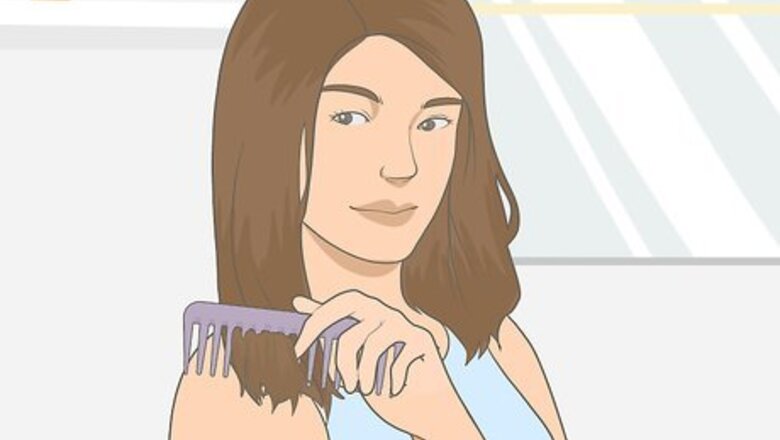
views
Creating a Long, Thick Ponytail

Brush through your hair to make sure it’s as smooth as possible. Even though you’ll be adding an extension that will cover much of your own hair, you still want to create a nice, smooth base. Gently remove any tangles with a brush or wide-toothed comb. If you have curly or textured hair, you can skip this part. You’ll want to detangle or prep your hair just like you normally would if you were going to pull it back into a ponytail.

Part your hair if you want one for your particular ponytail style. A side part or middle part would work well for a low or side ponytail. If you want to create one of these looks, take the time to part your hair now, either with a comb or with your fingers. A middle part with a low ponytail creates a classy and sleek look that’s perfect for formal occasions or a day at the office. A side part and a ponytail can help add volume to your look.

Secure your hair into a ponytail with a hair elastic. Gather your hair into a ponytail and wrap an elastic around it several times so it stays in place. Depending on how thin or thick your hair is, you may need to wrap the elastic around a few extra times to make sure it won’t come loose. If you’re going for a super high ponytail, wrap a second elastic around your hair about ⁄2 inch (13 mm) above the first. When you add the extension, the second elastic will naturally lift your ponytail.
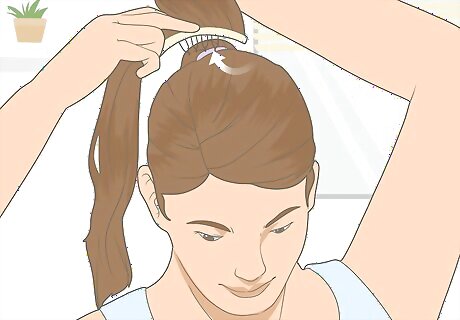
Slide the clip underneath the elastic on top of your ponytail. Look at the underside of the extension to locate the plastic or metal clip. Center that clip over your ponytail, and push it into the base so that it hooks underneath the hair elastic. Double check that the extension fully covers your hair elastic. If it doesn’t, it may not be in place properly.

Wrap a small piece of hair around the base of your ponytail. Section off a ⁄4 to ⁄2 inch (6.4 to 12.7 mm) thick piece of hair and pull it around the base of the hair extension several times until you’re left with a short 2 in (51 mm) tail. This wraparound helps hold the extension in place; plus, it hides the edge of the extension so no one can see it. A lot of ponytail extensions come with a built-in tail. If yours has one of these tails, simply wrap it around the base of your ponytail just like you would a piece of hair.

Pin the tail under the base of your ponytail to hide it from view. Hold the tail in one hand and position it against your head underneath the base of your ponytail. With the other hand, open a bobby pin and slide it over the tail, pushing it inward toward the ponytail. Make sure to put the bobby pin in with the ridged side facing down—this will help it stay in place better. If you don’t have a bobby pin, you could gently tuck the tail underneath the extension to hold it in place.
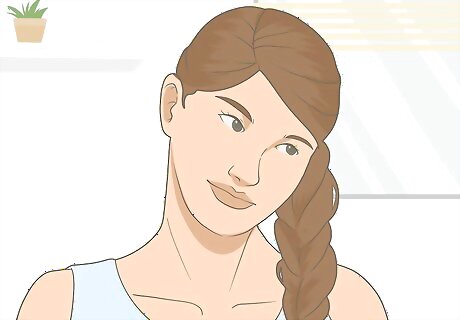
Use styling tools to finish your ponytail if you want a more defined style. You may love the look of your ponytail without doing anything more to it after putting the extension in place. But, you could use a curling iron to add romantic waves or a straightener to make sure your look is super smooth if you want to do something extra special. Extensions made from human hair are generally safe to style with heated tools. Synthetic extensions can’t always withstand the heat from styling tools, so make sure to check the packaging first for instructions and warnings. If you can’t use heat to change the style of your extension, you could always braid it to do something a little different.
Caring for Your Extension
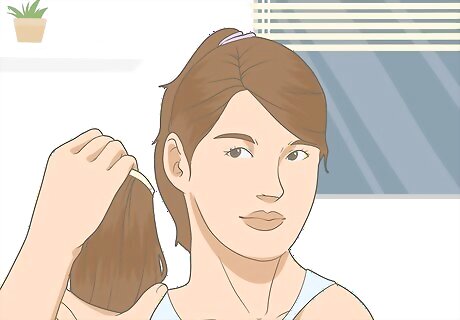
Remove your ponytail extension before going to bed. Sleeping with your extension in could damage the clip and create some really bad tangles. Take a minute to remove your extension and set it somewhere safe before going to bed. Ideally, you’ll remove and brush out your extension every day, but sometimes you might be too tired to do very much maintenance. At the very least, make sure to take it out of your hair.
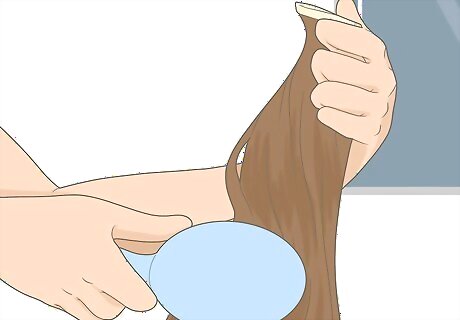
Brush your extension after you take it out to keep it tangle-free. Be gentle as you brush out the extension to prevent excess shedding. Start from the bottom and work your way up to release any knots or tangles. It often helps to brush out an extension while holding it up in the air rather than laying it down flat on a surface. Depending on the texture of your extension, you may want to use a wide-tooth comb or simply run your fingers through it.
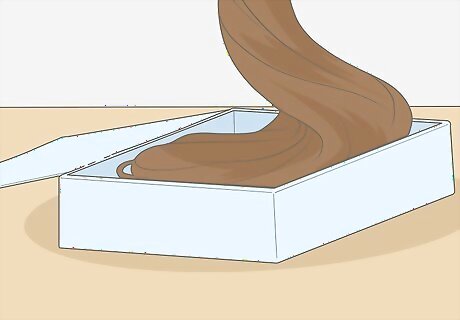
Keep your extension safe when you’re not wearing it by storing it in a box. Use the box it came in or something similar. The last thing you want is for your extension to get makeup on it or for it to get tangled up with other items in your bedroom or bathroom. If you don’t have a box for your extension, try to put it somewhere safe and out of the way. To make the extension more compact and easy to store, try loosely wrapping it around your hand so it forms a small circle.

Wash your extension every 30 wears or when it gets noticeably dirty. Extensions don’t need to be washed as often as your actual hair because they’re not getting exposed to the same amount of grease, oil, and product. When it starts to look greasy, dirty, or weighed down, wash it with lukewarm water and sulfate-free shampoo and conditioner. Always check the washing and drying instructions for your particular extension before doing anything. There may be different guidelines depending on the material or texture of the hair. Remember to remove your extension before washing it. Otherwise, it’ll get tangled up with the rest of your hair. You can blow-dry a human-hair extension, but you may want to let a synthetic extension air dry to help prolong its life.











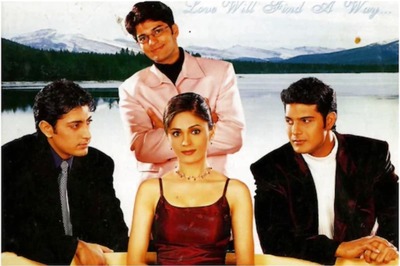


Comments
0 comment